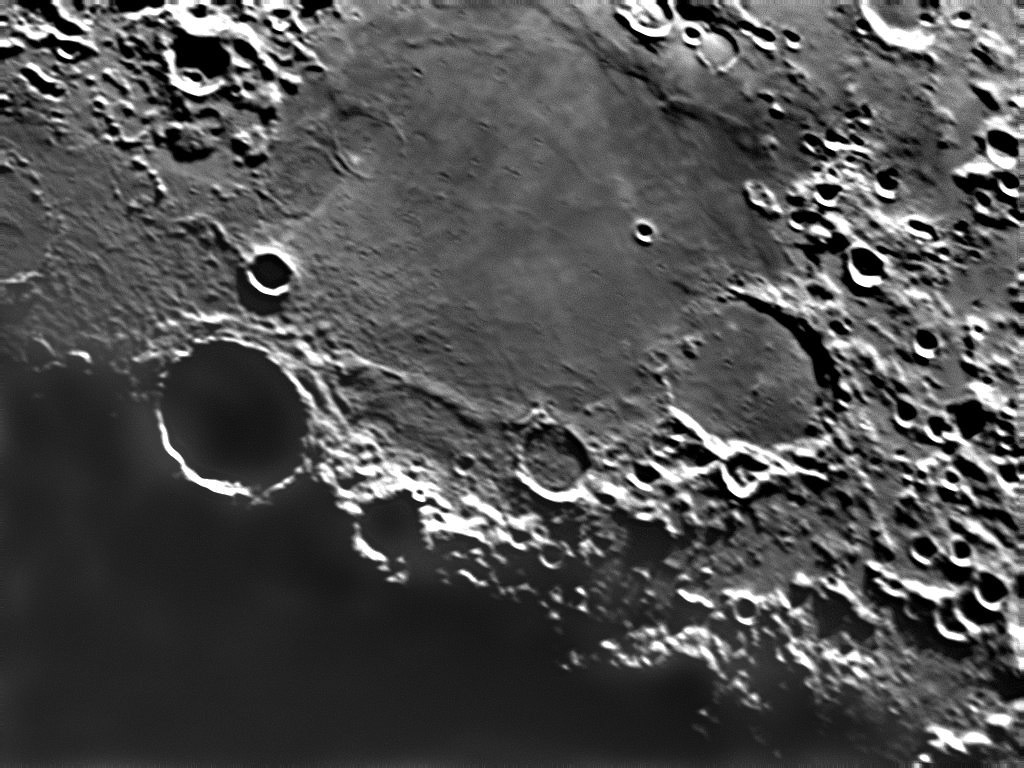
image by Peter van de Haar
Grazing illumination is the observer’s friend. With a low sun, normally smooth maria reveal bumps, hills and subtle depressions that otherwise escape detection. This view of Mare Nectaris shows areas of rougness and smoothness that tell interesting stories. The most conspicuous such feature is the radially lineated texture extending about one crater diameter all around Theophilus, the large shadow-filled crater at top left. This roughness is the discontinuous deposit of ejecta thrown out during the formation of Theophilus. Beyond the discontinuous ejecta are bright rays where the secondary craters begin. A smooth piece of mare occurs just west of Isidorus, the crater near top right. This area should have been covered by the discontinuous ejecta deposits from Theophilus but isn’t - it must be younger than Theophilus and all the rest of the mare lavas in Nectaris. Unfortunately, Theophilus and the Nectaris lavas have unknown ages. On the east part of Nectaris there are a number of apparently elongated or paired craters that look like secondaries. Examination of the Lunar Orbiter IV image shows that these are actually mostly circular craters and thus probably not secondaries. This suggests that the elongation of the small pits may be a processing artifact. If so, it is interesting that most of the other features across the image seem unaffected. Strange.
Note: I will be at the American Astronomical Society meeting in Calgary for the next few days and won’t be able to post a new LPOD until Thursday. On my return I hope to find a mail box full of images for future LPODs!
Technical Details:
June 1, 2006. Location: Netherlands. Seeing poor (3/10). Celestron C11 @ f10, camera DMK 31AF03. 500 of 1300 images stacked and processed with Registax.
Related Links:
Rükl charts 47 & 58
Yesterday's LPOD: Unknown Rille?
Tomorrow's LPOD: Ring the Bell
COMMENTS?
Register, Log in, and join in the comments.



